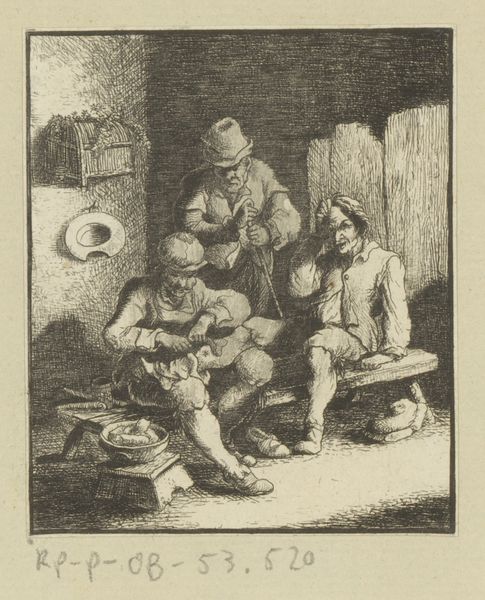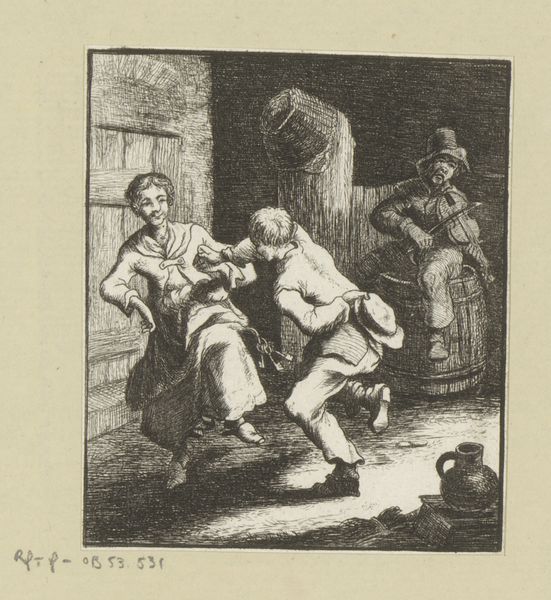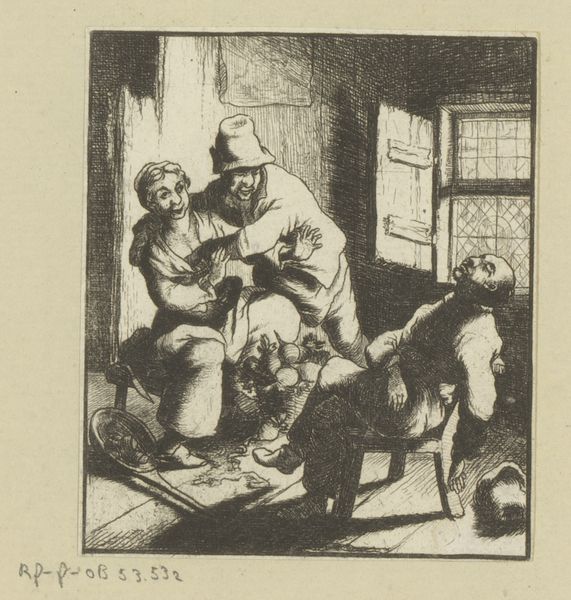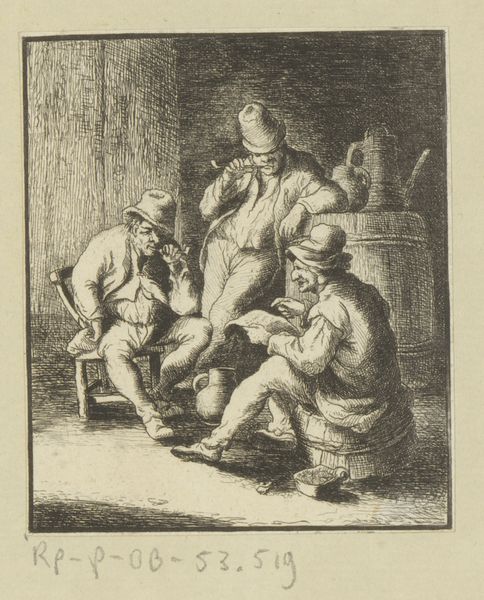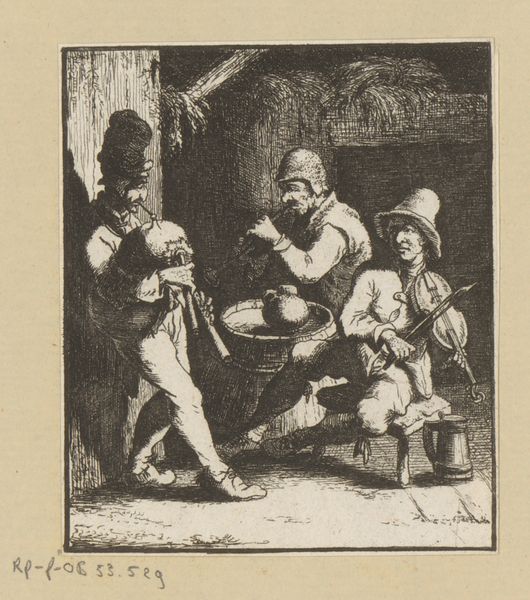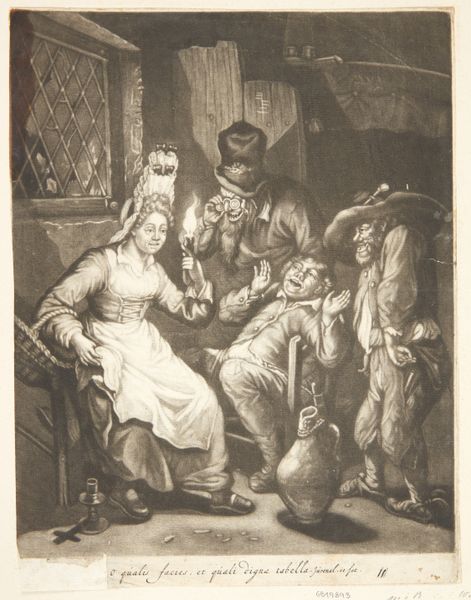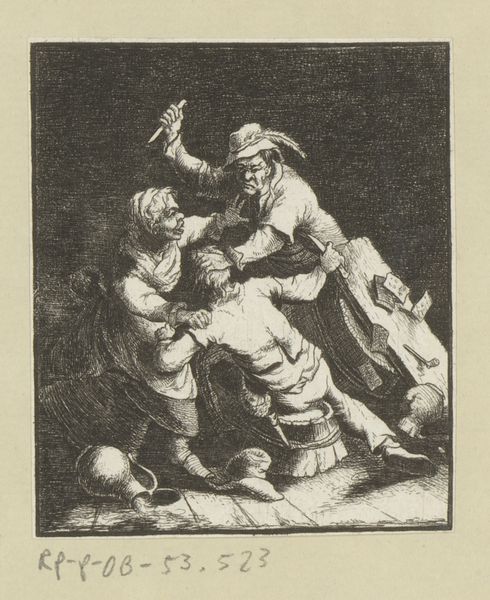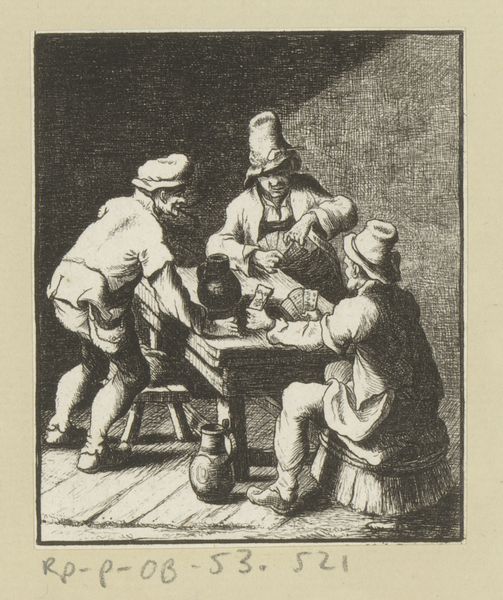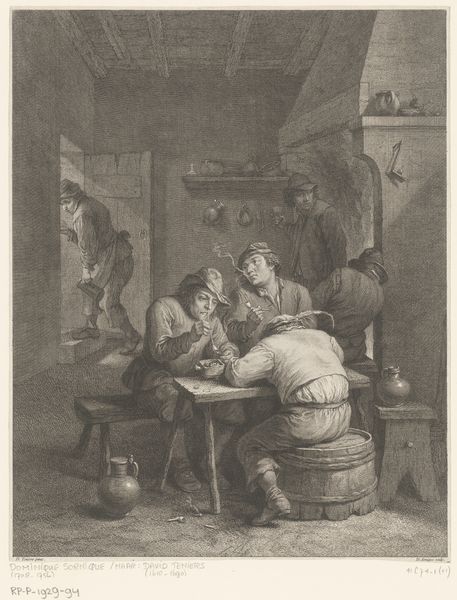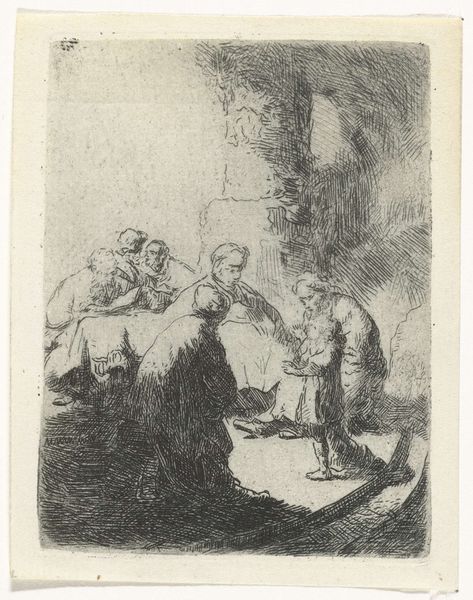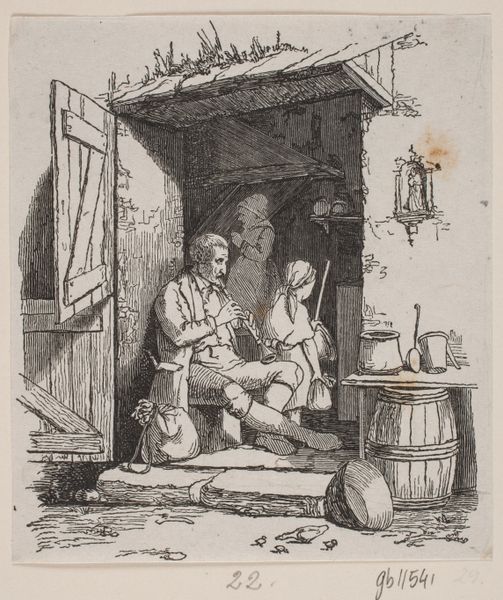
Dimensions: height 94 mm, width 80 mm
Copyright: Rijks Museum: Open Domain
This etching by Johann Andreas Benjamin Nothnagel depicts a tavern scene with two men pestering a woman at a table. The symbols of inebriation are everywhere: a wine glass, a jug, and an overturned bottle on the floor. But such scenes are not unique to 18th-century taverns. The motif of revelry, often bordering on chaos, has roots stretching back to ancient Dionysian festivals. We see echoes of this in Renaissance paintings of bacchanals, where wine-induced frenzy blurs the lines between humans and beasts. Even the woman’s defensive posture, reminiscent of ancient depictions of assaulted nymphs, speaks to a deeper, almost archetypal struggle. The recurrent image of the wine bottle has evolved through centuries. Initially linked to religious rituals and celebrations, it gradually became a symbol of earthly indulgence. This transformation is not merely historical; it is psychological. The bottle triggers a collective memory of both joy and potential excess. It underscores how deeply our subconscious links pleasure with peril. These motifs persist, not in a linear progression, but as recurring patterns.
Comments
No comments
Be the first to comment and join the conversation on the ultimate creative platform.
